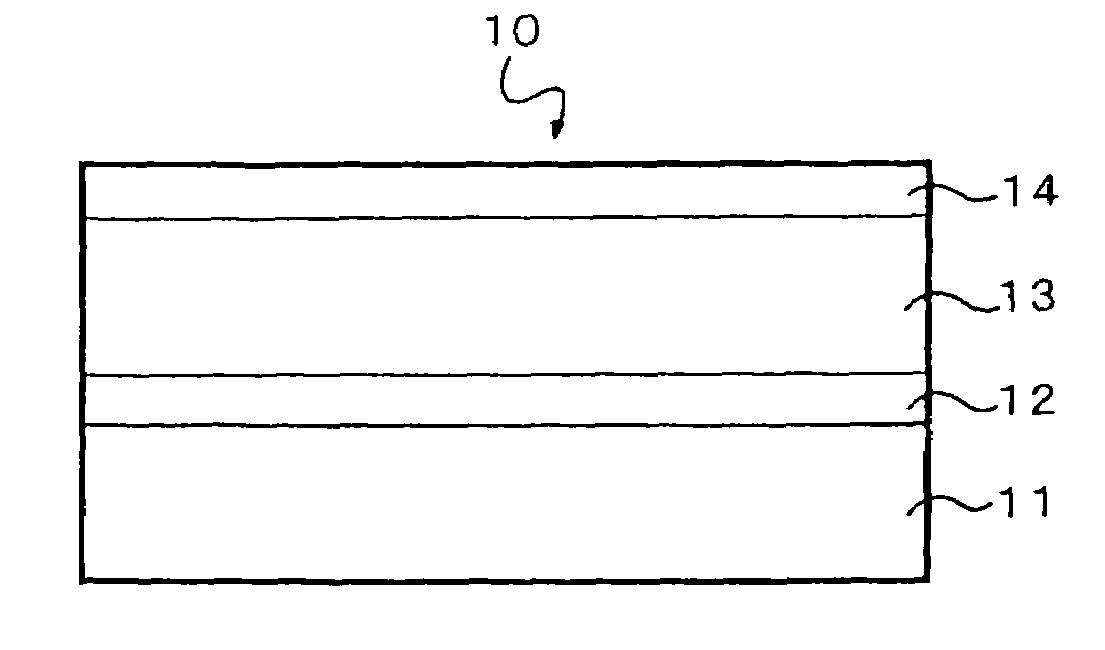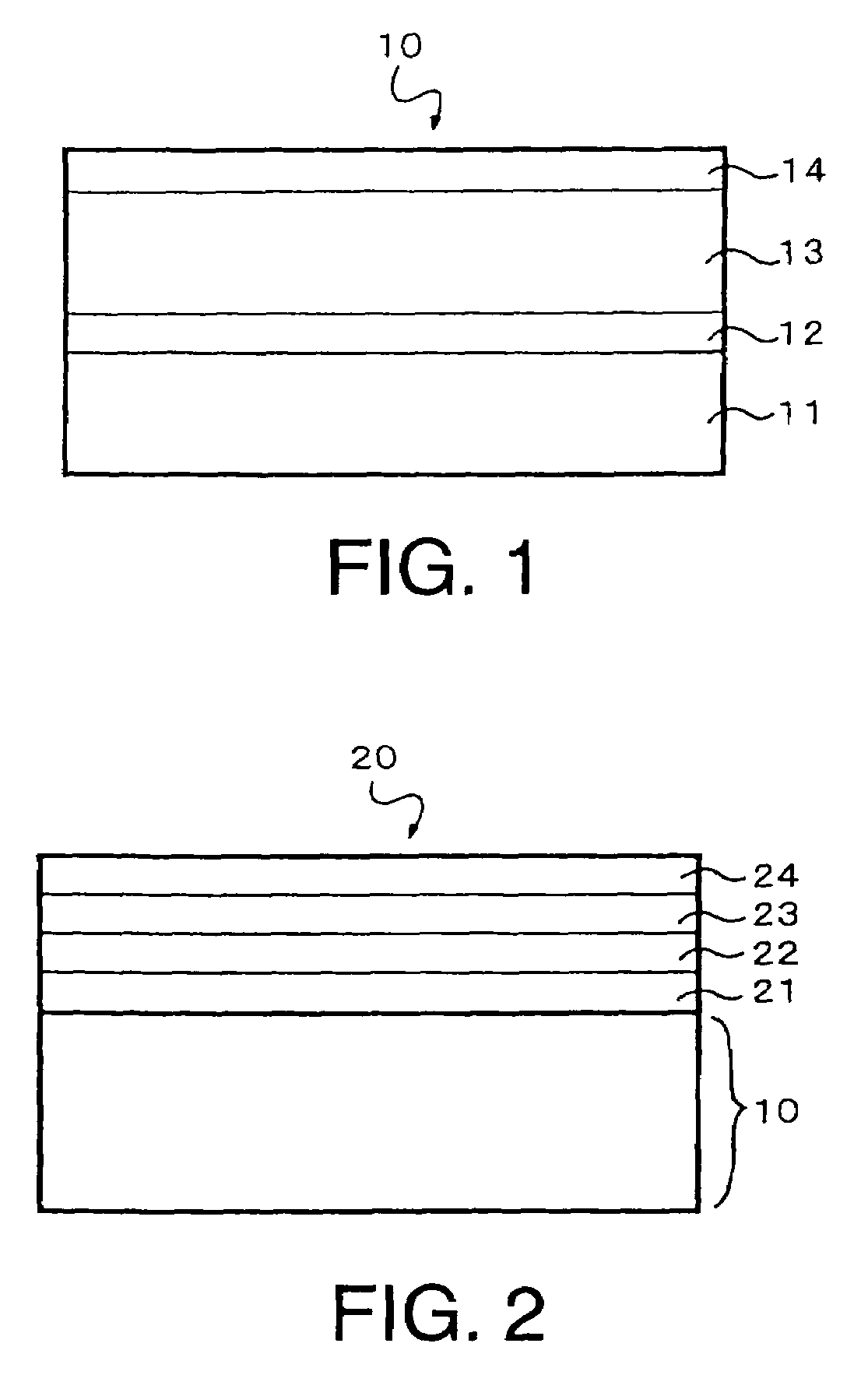Disk substrate for a perpendicular magnetic recording medium, perpendicular magnetic recording disk and manufacturing methods thereof
- Summary
- Abstract
- Description
- Claims
- Application Information
AI Technical Summary
Benefits of technology
Problems solved by technology
Method used
Image
Examples
first example
[0057]A glass disk was produced by forming amorphous aluminosilicate glass into a disc shape by direct pressing. The glass disk was successively subjected to grinding, polishing, and chemical strengthening to obtain the smooth and flat non-magnetic disk base member 11 comprising a chemically strengthened glass disk. The surface roughness of the principal surface of the disk base member was measured by the use of an AFM (atomic force microscope). As a result, the principal surface had a smooth and flat surface profile having Rmax of 4.8 nm and Ra of 0.42 nm. It is noted here that Rmax (maximum roughness) and Ra (average roughness) are surface roughness parameters specified by JIS (Japanese Industry Standard).
[0058]By the use of an in-line deposition apparatus which has been evacuated, the adhesion layer 12, the soft magnetic layer 13, and the protection layer 14 were successively deposited on the above-mentioned disk base member 11 in an Ar atmosphere by DC magnetron sputtering to pr...
second example
[0063]The perpendicular magnetic recording disk 20 was manufactured by the use of the disk substrate 10 obtained in the first example.
[0064]Specifically, on the disk substrate 10 which has been heated, the underlayer 21, the perpendicular magnetic recording layer 22, and the medium protection layer 23 were successively deposited by DC magnetron sputtering in the Ar atmosphere by the use of a single-substrate / disk deposition apparatus or a fixed target deposition apparatus which has been evacuated.
[0065]The disk substrate 10 was heated by holding the disk substrate 10 at 350° C. for 10 seconds in vacuum. On the disk substrate 10 after heated, the underlayer 21 made of amorphous NiTa (Ni: 45 at %, Ta: 55 at %) was deposited to the thickness of 10 nm by sputtering using a NiTa target. Subsequently, the perpendicular magnetic recording layer 22 having an hcp crystal structure and a thickness of 20 nm was deposited by sputtering using a CoCrPt alloy target as a hard magnetic substance. T...
third example
[0080]In a third example, a disk substrate for a perpendicular magnetic recording medium was similar to that in the first example except that the disk base member 11 had a principal surface provided with a texture.
[0081]The texture serves to give magnetic anisotropy to the soft magnetic layer. Given the magnetic anisotropy, the hard magnetization axis of the soft magnetic layer is oriented in the flying / running direction of the magnetic head, namely, in the disk circumferential direction.
[0082]Specifically, circular stripe grooves were formed on the principal surface of the disk base member 11.
[0083]The texture was formed by subjecting the disk base member 11 to tape texturing by the use of a single-substrate tape texturing apparatus and diamond slurry. The disk substrate in the third example was similar to that of the first example except that the texture was formed on the principal surface of the disk substrate.
[0084]The surface roughness of the disk substrate 10 thus obtained was...
PUM
 Login to View More
Login to View More Abstract
Description
Claims
Application Information
 Login to View More
Login to View More - R&D
- Intellectual Property
- Life Sciences
- Materials
- Tech Scout
- Unparalleled Data Quality
- Higher Quality Content
- 60% Fewer Hallucinations
Browse by: Latest US Patents, China's latest patents, Technical Efficacy Thesaurus, Application Domain, Technology Topic, Popular Technical Reports.
© 2025 PatSnap. All rights reserved.Legal|Privacy policy|Modern Slavery Act Transparency Statement|Sitemap|About US| Contact US: help@patsnap.com


